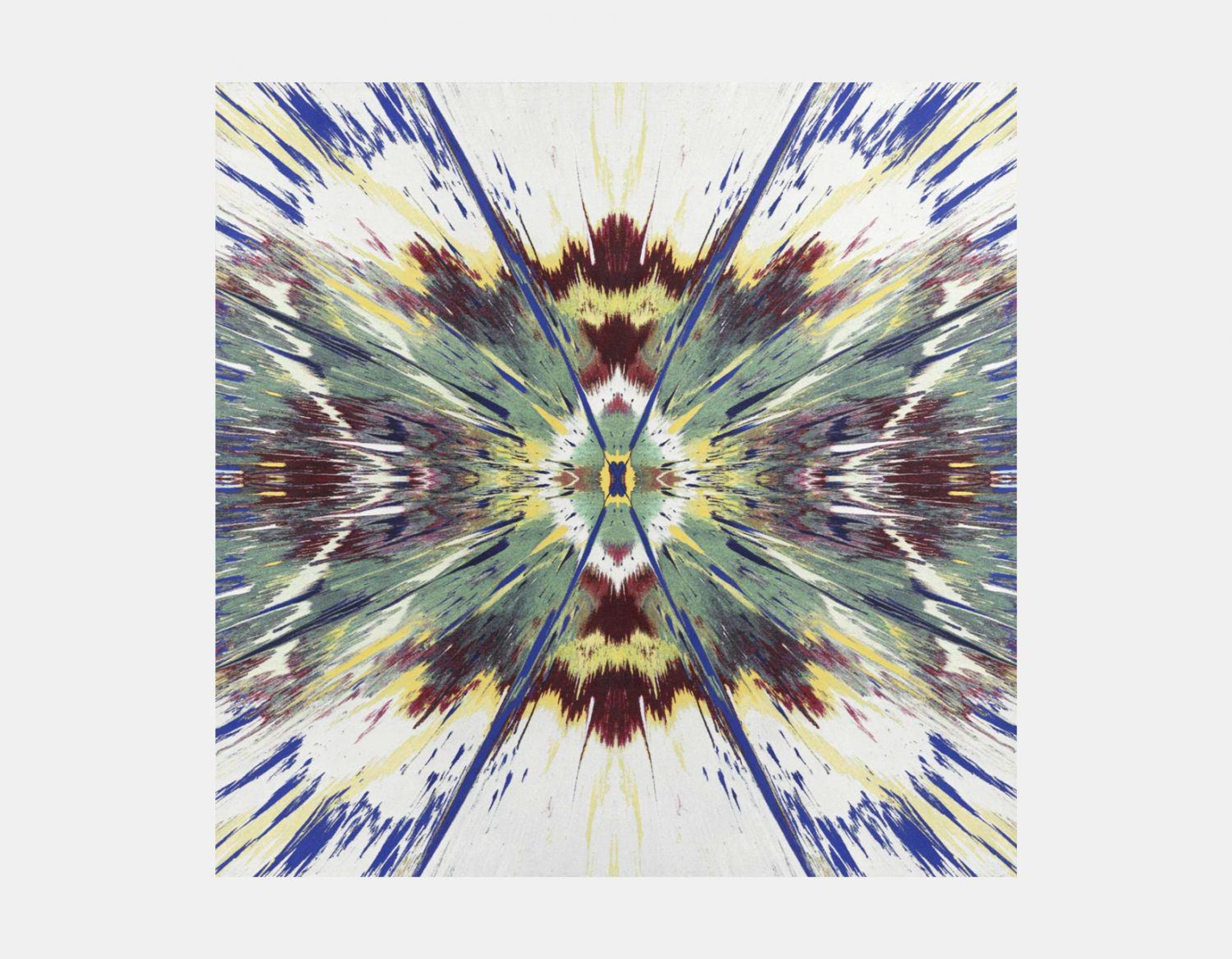
H1-4 Enter The Infinite - Trance

H1-4 Enter The Infinite - Trance
Tapestry
Damien Hirst
Price data unavailable
There aren't enough data points on this work for a comprehensive result. Please speak to a specialist by making an enquiry.
25 x 25cm, Edition of 20, Tapestry
Meaning & Analysis
H1-4 Enter The Infinite - Trance is a Jacquard-woven tapestry produced by British artist Damien Hirst in 2016. The tapestry, which comes in a limited edition size of 20, shows a symmetrical pattern composed of red, yellow, blue and green thread against a white backdrop. The intricate weaving is captivating and draws attention towards the time and labour that went into making the tapestry.
The tapestry is part of Hirst’s Enter The Infinite collection which is composed of twelve tapestries which all follow a similar colour composition. Of all the tapestries, H1-4 Enter The Infinite - Trance privileges the most blank space in the composition. Some of the tapestries leave little white on show, such as H1-7 Enter The Infinite - Being, however this iteration enables the viewer to see the surface that the threads are woven into. All the tapestries in the collection were produced using a Jacquard loom which was invented in 1804 by French weaver Joseph-Marie Jacquard.
The symmetrical pattern in H1-4 Enter The Infinite - Trance captures Hirst’s methodological approach to art and the scientific precision that marks many of his artworks. Notable other pieces produced by Hirst which demonstrate this almost clinical approach to art are Hirst’s Spot paintings which the artist worked on from 1986 to 2011. In these paintings, Hirst produced grids of multicoloured dots and circles, all equally spaced out and identical in size.